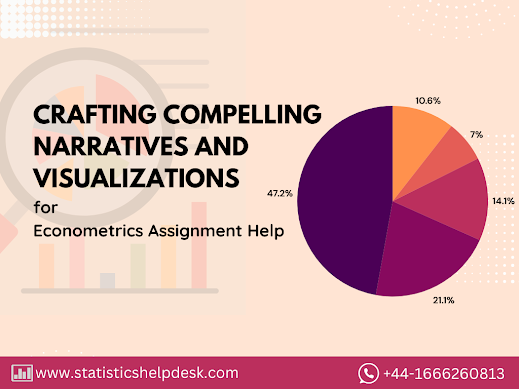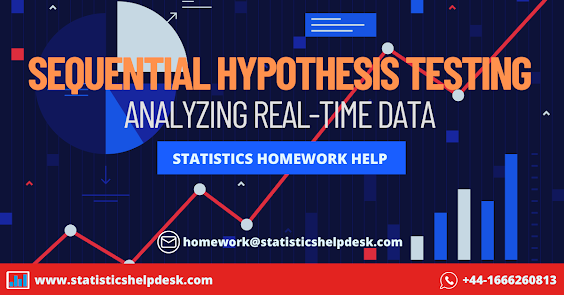Introduction
Python
has been the popular default language for predictive modeling
owing to its ease of use, flexibility, and availability of libraries that are specific to
data analysis and machine learning. From cleaning to building models, and even
evaluating the performance of models, you can do all of these with Python tools
like sci-kit-learn and
stats models, as
well as for data analysis using the pandas tool. Getting acquainted with these
tools requires following certain procedures, writing optimized codes and
consistent practice. Availing Python help service can be helpful for students
requiring extra assistance with assignments or with coding issues in predictive
modeling tasks.
In this article, we take you through
techniques in predictive modeling with coding illustrations on how they can be
implemented in Python. Specifically, the guide will be resourceful for students
handling data analysis work and seeking Python assignment help.
Why Regression Analysis?
Step-by-Step Guide to Building Predictive Models in Python
1. Setting Up Your Python Environment
First of all: you need to
prepare the Python environment for data analysis. Jupyter Notebooks are perfect
as it is a platform for writing and executing code in small segments. You’ll
need the following libraries:
# Install necessary
packages
!pip install numpy
pandas matplotlib seaborn scikit-learn statsmodels
2. Loading and Understanding the Dataset
For this example, we’ll
use a sample dataset: the ‘student_scores.csv’ file that consists of records of Study hours
and Scores of the students. It is a simple one, but ideal for the demonstration
of the basics of regression. The dataset has two columns: Numerical variables
include study hours referred to as Hours, and exam scores referred as Scores.
Download the students_scores.csv file to follow along with
the code below.
import pandas as pd
# Load the dataset
data = pd.read_csv("students_scores.csv")
data.head()
3. Exploratory Data Analysis (EDA)
Let us first understand the data before we
perform regression in python. Let us first explore the basic relationship
between the two variables – the number of hours spent studying and the scores.
import
matplotlib.pyplot as plt
import seaborn as sns
# Plot Hours vs.
Scores
plt.figure(figsize=(8,5))
sns.scatterplot(data=data,
x='Hours', y='Scores')
plt.title('Study Hours
vs. Exam Scores')
plt.xlabel('Hours
Studied')
plt.ylabel('Exam
Scores')
plt.show()
While analyzing the
scatter plot we can clearly say the higher the hours studied, the higher the
scores. With this background, it will be easier to build a regression model.
4. Building a Simple Linear Regression Model
Importing Libraries and Splitting Data
First, let’s use the tool
offered by the sci-kit-learn to split the data into training and testing data
that is necessary to check the performance of the model
from
sklearn.model_selection import train_test_split
# Define features (X) and
target (y)
X = data[['Hours']]
y = data['Scores']
# Split data into
training and test sets
X_train, X_test,
y_train, y_test = train_test_split(X, y, test_size=0.2, random_state=42)
Training the Linear Regression Model
Now, we’ll fit a linear regression model to predict exam
scores based on study hours.
from
sklearn.linear_model import LinearRegression
# Initialize the model
model =
LinearRegression()
# Train the model
model.fit(X_train,
y_train)
# Display the model's
coefficients
print(f"Intercept:
{model.intercept_}")
print(f"Coefficient
for Hours: {model.coef_[0]}")
This model equation is Scores = Intercept + Coefficient *
Hours.
Making Predictions and Evaluating the Model
Next, we’ll make predictions on the test set and evaluate the
model's performance using the Mean Absolute Error (MAE).
from sklearn.metrics
import mean_absolute_error
# Predict on the test
set
y_pred =
model.predict(X_test)
# Calculate MAE
mae =
mean_absolute_error(y_test, y_pred)
print(f"Mean
Absolute Error: {mae}")
A lower MAE indicates that the model's predictions are close
to the actual scores, which confirms that hours studied is a strong predictor
of exam performance.
Visualizing the Regression Line
Let’s add the regression line to our initial scatter plot to
confirm the fit.
# Plot data points and
regression line
plt.figure(figsize=(8,5))
sns.scatterplot(data=data,
x='Hours', y='Scores')
plt.plot(X,
model.predict(X), color='red') #
Regression line
plt.title('Regression
Line for Study Hours vs. Exam Scores')
plt.xlabel('Hours
Studied')
plt.ylabel('Exam
Scores')
plt.show()
For more assistance with other regression techniques, opting
for our Python assignment help services provides the must needed support at
crunch times.
5. Improving the Model with Polynomial Regression
If the relationship between variables is non-linear, we can
use polynomial regression to capture complexity. Here’s how to fit a polynomial
regression model.
from
sklearn.preprocessing import PolynomialFeatures
# Transform the data
to include polynomial features
poly =
PolynomialFeatures(degree=2)
X_poly =
poly.fit_transform(X)
# Split the
transformed data
X_train_poly,
X_test_poly, y_train_poly, y_test_poly = train_test_split(X_poly, y,
test_size=0.2, random_state=42)
# Fit the polynomial
regression model
model_poly =
LinearRegression()
model_poly.fit(X_train_poly,
y_train_poly)
# Predict and evaluate
y_pred_poly =
model_poly.predict(X_test_poly)
mae_poly =
mean_absolute_error(y_test_poly, y_pred_poly)
print(f"Polynomial
Regression MAE: {mae_poly}")
6. Adding Regularization with Ridge and Lasso Regression
Regularization techniques like Ridge and Lasso are useful for handling overfitting, especially with complex models. Here’s how to apply
Ridge regression:
from sklearn.linear_model
import Ridge
# Initialize and train
the Ridge model
ridge_model =
Ridge(alpha=1.0)
ridge_model.fit(X_train,
y_train)
# Predict and evaluate
y_pred_ridge =
ridge_model.predict(X_test)
mae_ridge =
mean_absolute_error(y_test, y_pred_ridge)
print(f"Ridge
Regression MAE: {mae_ridge}")
Empowering Students in
Python: Assignment help for improving coding skills
Working on predictive modeling in Python can
be both challenging and rewarding. Every aspect of the service we offer through
Python homework help is precisely designed to enable students not only to
work through the assignments but also to obtain a better understanding of the
concepts and the use of optimized Python coding in the assignments. Our
approach is focused on student learning in terms of improving the fundamentals of the Python programming language, data analysis methods, and statistical modeling
techniques.
There
are a few defined areas where our service stands out
1. First, we focus on individual learning and tutoring.
2. Second, we provide comprehensive solutions and post-delivery
support. Students get written solutions to all assignments, broken down
into steps of the code and detailed explanations of the statistical method used
so that the students may replicate the work in other projects.
As
you choose our service, you get help from a team of professional statisticians
and Python coders who will explain
the complex concept, help to overcome technical difficulties and give recommendations
on how to improve the code.
In
addition to predictive analytics, we provide thorough consultation on all
aspects of statistical analysis using Python. Our services include assistance
with key methods such as:
• Descriptive Statistics
• Inferential Statistics
• Regression Analysis
• Time Series Analysis
• Machine Learning
Algorithms
Hire
our Python assignment support service and not only you will get professional
assistance with your tasks but also the knowledge and skills that you can
utilize in your future assignments.
Conclusion
In this guide, we
introduced several approaches to predictive modeling with the use of Python
libraries. Thus, by applying linear regression, polynomial regression, and
Ridge regularization students will be able to develop an understanding of how
to predict and adjust models depending on the complexity of the given data.
These techniques are very useful for students who engage in data analysis
assignments as these techniques are helpful in handling predictive modeling
with high accuracy. Also, take advantage of engaging with our Python
assignment help online expert who can not only solve your Python coding issues but
also provide valuable feedback on your work for any possible improvements.




